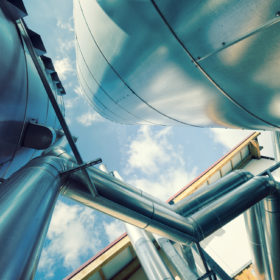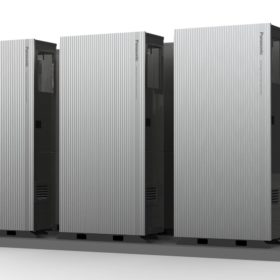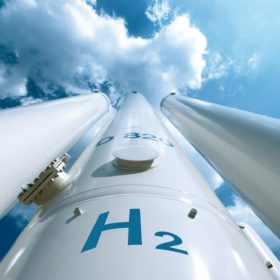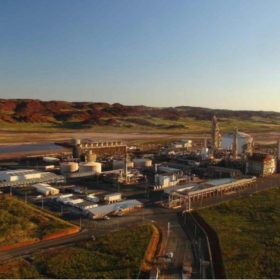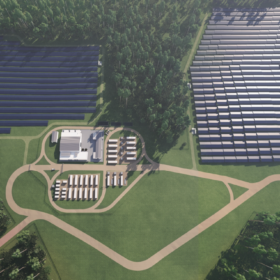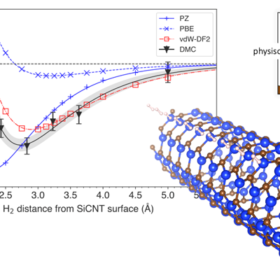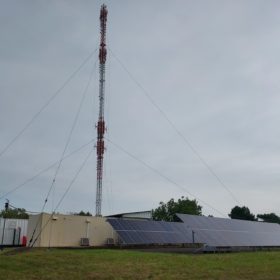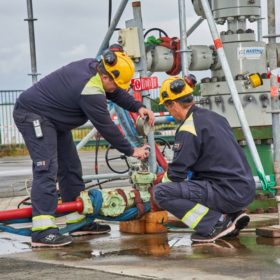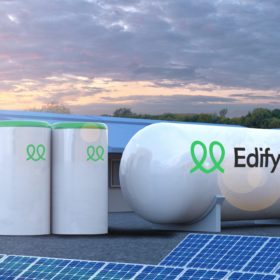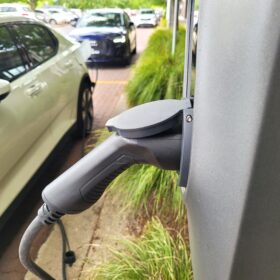‘Carbon negative’ hydrogen & ammonia hub plan partially unveiled for Bundaberg
Plans for a $400 million green hydrogen and ammonia hub in Bundaberg on Queensland’s coast were partially released on Tuesday, with Clean Holdings’ chief executive Ken Mathews telling pv magazine Australia another major project partner is to be announced shortly. As it stands, the project will use hydrogen technology from the newly minted CAC-H2 to gasify agricultural waste from the region and separate out the hydrogen in a process the company’s energy CEO described to pv magazine Australia as “greener than green”.
Panasonic launches 5 kW fuel cell system for commercial applications
The system has dimensions of 834×417×1,766 mm and weighs 205 kg including the design panel. It achieves an electrical efficiency of 56% and can be connected with a hot water storage unit.
How one chemical engineer is channeling Australia’s plentiful PV into hydrogen-derivative renewable fuels
Rose Amal arrived in Australia from Indonesia 38 years ago to study at UNSW. Now her leadership and research are contributing to a new sustainable economy for Australia and clean fuels for energy-hungry industries.
Feeling the industrial heat: carving a path to green thermal
Beyond curtailment of abundant solar and wind output lies a giant sponge of industrial need. Engie Impact is determined to connect the dots.
HDF to construct baseload power plant using green hydrogen, plans Australia expansion
The project includes a solar park coupled with what HDF Energy claims is the “largest green hydrogen storage of intermittent electricity sources” at 128 MWh. Importantly, the company also simultaneously announced expansion plans into Australia, saying its hydrogen technology will soon be available here, adding that it has “projects already in development for Australia”.
Storing hydrogen with silicon-carbide nanotubes
Storing hydrogen in carbon nanotubes and other nanostructures is still far from reaching commercial maturity. A Japanese research team, however, has developed a new simulation technology that may help better estimate the energy needed to favour the ideal interaction between hydrogen and its storage material.
Solar-plus-hydrogen for air traffic control
A 19.8 kW PV system is powering a telecommunications antenna at a French air control centre. When it produces more energy than needed, the surplus is used to produce hydrogen which is then utilised to produce new electricity via a fuel cell system and provide power to the antenna during a period of up to five days. For short-term storage, lithium-ion batteries are used.
Dutch gas giant begins storing hydrogen in underground salt cavern
Operated by Gasunie, the underground storage facility is located near Veendam in the province of Groningen and should be fully operational in 2026. Tests will be run until spring 2022.
Edify approved for 1 GW green hydrogen and battery project in North Queensland
Renewables developer Edify Energy has been granted development approval to build and operate a green hydrogen production plant of up to 1 GW, as well as a behind-the-meter solar and battery storage facility within the Lansdown Eco-Industrial Precinct in Townsville, northern Queensland.
Queensland uni seeks to verify tech claiming to improve hydrogen fuel cell efficiency by 60%
Researchers at the Queensland University of Technology are testing technology which claims to increase the output of hydrogen fuel cells by as much as 60%, put forth by Australian transport technology company, Titan Hydrogen.
